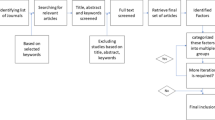Abstract
The portability and low cost of e-commerce platforms have attracted more and more businesses and consumers. However, due to the virtual nature of e-commerce platforms, there is a serious information asymmetry between merchants and consumers–resulting in a serious credit problem of e-commerce platforms. The trust crisis remains a challenging issue for the development of e-commerce. Existing researches propose to strengthen trust supervision to protect the consumers. However, the trust crisis often hurts multiple parties’ interests. We can neither attribute the cause of dishonest transactions to a single party, nor supervise only a single party. To solve the problem of commercial breach of trust, we propose a margin policy-based consumer-to-business-to-consumer (or MP-C2B2C) model for e-commerce platforms. First, we add a third-party platform supervision mechanism to the C2C e-commerce model by presenting different margin policies. Second, we give the unit price trading mode, dual price trading mode and consumer reporting behavior mode under the margin policies based on two-way games. We investigate the game strategies of each participant in the e-commerce transaction process under MP-C2B2C model by comparing them with different representative game models. The research results show that participants in the transaction will be influenced by the margin system to choose the game strategy with better trustworthiness. Trustworthiness of the e-commerce platform is enhanced under the MP-C2B2C model.


















Similar content being viewed by others
References
Wang W-T, Wang Y-S, Liu E-R (2016) . Inf Manag 53(5):625–642
Cockrill MP, Bryant W K, Franklin D C, Mcneely M H, Ryan T J, Sweet A P, Siadek S J, Faith Jr R R, Goris J M, Malek T A, et al. (2015) Electronic commerce using a transaction network. Google Patents. US Patent 8,935,182
Watson R T, Berthon P, Pitt L F, Zinkhan G M, et al. (2018) Electronic commerce: The strategic perspective. Dryden
Oliveira T, Alhinho M, Rita P, Dhillon G (2017) . Comput Hum Behav 71:153–164
Bertarelli S (2015) . Electron Commer Res Appl 14(2):75–80
Fang Y-H, Li C-Y (2020) . Electron Commer Res Appl 40:100907
Zhao W, Ye S (2015) .. In: LISS 2014. Springer, pp 1465–1470
Chaabna S, Wang H (2015) . Int J Market Stud 7(2):44
Liu W, Feng X, Zhang F, Du Y, Yan C (2018) . IEEE Access 6:29109–29131
Sun H-L, Liang K-P, Liao H, Chen D-B (2021) . Knowl-Based Syst 219:106895
Wang H, Yu C, Wang L, Yu Q (2018) . IEEE Trans Serv Comput 11(4):644–657
Liang D, Dai Z, Wang M (2021) . Appl Soft Comput 98:106847
Abedinzadeh S, Sadaoui S (2014) . Appl Intell 41(1):55–75
Mehdi M, Bouguila N, Bentahar J (2014) . Appl Intell 41(2):503–524
Choi C R, Jeong H Y (2014) . Inf Sci 277:553–566
Pan Y, He F, Yu H, Li H (2020) . Appl Intell 50(2):314–327
Ghavipour M, Meybodi M R (2019) . Appl Intell 49(2):435–448
Li M, Xiang Y, Zhang B, Huang Z, Zhang J (2016) . Appl Intell 44(4):969–987
Khan A (2015) . Comput Fraud Secur 2015(5):16–19
Guo Y, Bao Y, Stuart B J, Le-Nguyen K (2018) . Inf Syst J 28(2):359–383
Kang Y, Jia N, Cui R, Deng J (2021) . Appl Soft Comput 105:107259
McGregor D (1960) . Organ Theory 358:374
Aspara J, Grant D B, Holmlund M (2021) . Ind Mark Manag 93:356–369
Tomljanović J, Turina T, Kurelović E K (2016) .. In: 2016 39th International Convention on Information and Communication Technology, Electronics and Microelectronics (MIPRO). IEEE, pp 1546–1551
Myerson R B (2013) Game theory. Harvard university press
Bahbouhi J E, Moussa N (2017) . Appl Math Comput 292:128–144
Xue W, Xu Z, Zeng X-J (2021) . Appl Intell 51(3):1227–1243
Roy S K, Maiti S K (2020) Appl Intell:1–18
Yang K, You X, Liu S, Pan H (2020) . Appl Intell 50(12):4529–4542
Hamilton S N, Miller W L, Ott A, Saydjari O S (2002) .. In: 4th Information survivability workshop (ISW-2001/2002), pp 1–4
Yang F, Wang A, Wu J, Tang L (2017) . Syst Eng Theory Pract 37(8):2102–2110
Yao L, Li Y, Wang F-j (2010) . East China Econ Manag 24(3):117–119
Zhang J, Lou J, Qiu J, Lu J (2021) . Inf Sci 563:166–182
Dixit A K, Skeath S (2015) Games of strategy: Fourth international student edition. WW Norton & Company
Simon H, March J (1976) Administrative behavior organization. Free Press, New York
Zhang D-g, Chen C, Cui Y-y, Zhang T (2018) Mob Netw Appl:1–14
Acknowledgments
This work was partially supported by the Humanity and Social Science Youth Fund of Ministry of Education of China (No. 18YJCZH170), Six talent peaks project in Jiangsu Province in 2019 (No. RJFW-029), Innovative training program for College Students in Jiangsu Province (Nos. 201810298016Z, 2018NFUSPITP267, 2018NFUSPITP293). L. Wang is the corresponding author.
Author information
Authors and Affiliations
Corresponding author
Additional information
Publisher’s note
Springer Nature remains neutral with regard to jurisdictional claims in published maps and institutional affiliations.
Rights and permissions
About this article
Cite this article
Wang, L., Wan, J., Zhang, Y. et al. Trustworthiness two-way games via margin policy in e-commerce platforms. Appl Intell 52, 2671–2689 (2022). https://doi.org/10.1007/s10489-021-02553-6
Accepted:
Published:
Issue Date:
DOI: https://doi.org/10.1007/s10489-021-02553-6




